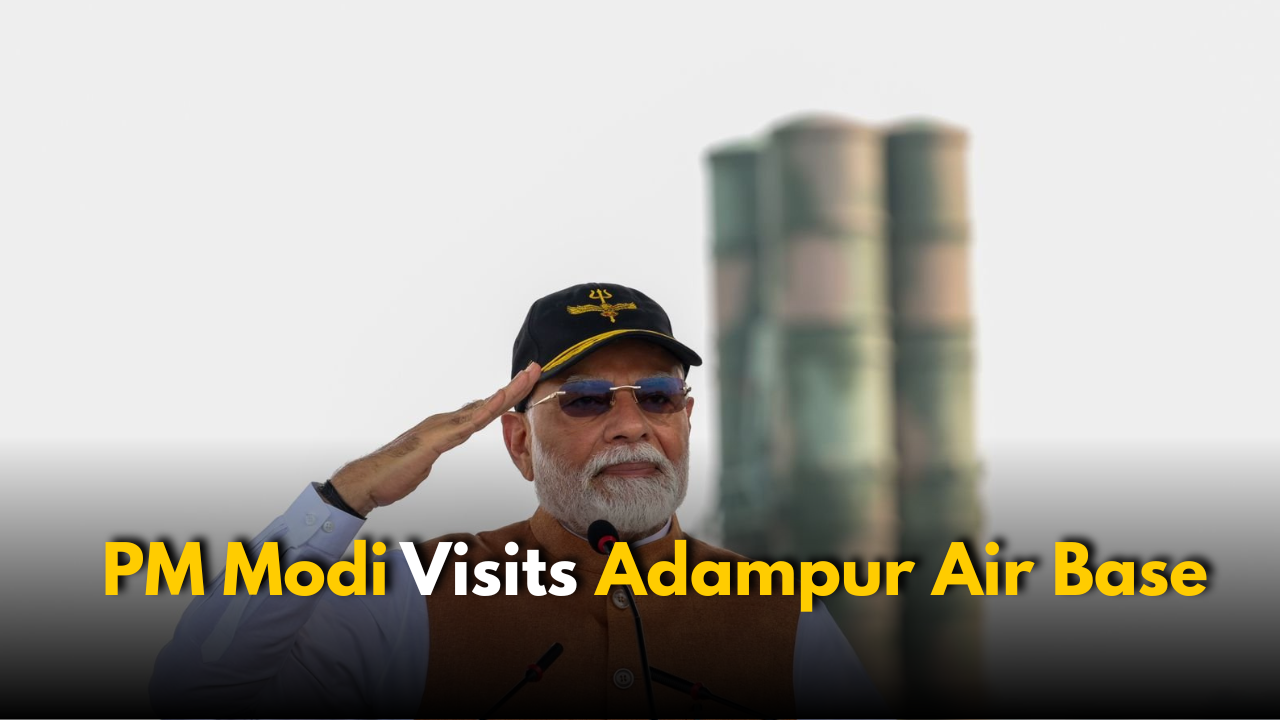In a bold and strategic move, Prime Minister Narendra Modi visited the Indian Air Force Station at Adampur, Punjab, today, standing in front of the state-of-the-art S-400 missile defense system. The visit, captured in a widely circulated photograph, comes just days after Pakistan made a series of unverified claims about damaging the very same airbase during recent cross-border hostilities.
The Prime Minister’s visit isn’t just symbolic—it’s a direct message to Pakistan: India’s defenses remain strong, and any aggression will be met with precision and resolve. His appearance at the site, backed by the imposing image of the Russian-made S-400 system, effectively dismantles Pakistan’s claims of having neutralized the base.
Pakistan’s Claims and India’s Counter-Narrative
Pakistan recently claimed that its forces had successfully hit the Adampur airbase, destroyed India’s S-400 air defense systems, and inflicted heavy casualties. These allegations were quickly debunked by Indian officials, who accused Pakistan of circulating morphed satellite images and false propaganda.
Indian government sources emphasized that the base remains fully operational and that the Prime Minister’s early morning visit—landing at 6:15 am—was a clear rebuttal to those claims. “Pakistan’s narrative is fiction. The PM’s presence at the airbase is the real proof,” a senior defense official told the media.
A Salute to the Armed Forces
During his nearly one-hour visit, PM Modi met with air warriors and soldiers stationed at Adampur. “India is eternally grateful to our armed forces for everything they do for our nation,” he posted on X (formerly Twitter), praising their bravery during what he called the “100-hour missile and drone war” against Pakistan.
The Indian Air Force confirmed minimal damage to its installations, despite Pakistan’s aggressive retaliation for Operation Sindoor, India’s military response to cross-border terrorism linked to events in Pahalgam.
S-400 System at the Forefront
This marks the first time that an image of India’s deployed S-400 system has been made public. The air defense platform, among the most advanced in the world, forms a crucial part of India’s missile defense shield. India currently possesses three S-400 squadrons, with two more on the way.
The image of PM Modi standing with the S-400 stack in the background is not just a morale booster for Indian citizens but a signal to adversaries about the country’s readiness and capability.
India’s Strategic Response: Operation Sindoor
The Prime Minister’s address last night, which lasted 22 minutes, laid out India’s current defense strategy. He praised the precision strikes carried out during Operation Sindoor, which targeted nine terrorist camps in Pakistan and Pakistan-occupied Kashmir.
Satellite imagery accessed by NDTV confirmed extensive damage to Pakistan’s military infrastructure, including airbases in Rawalpindi, Sargodha, Jacobabad, and Thatta. Key facilities like radar sites, weapon storage units, and command centers were reportedly destroyed.
Ceasefire in Place—but for How Long?
A fragile ceasefire is currently in effect, brokered by U.S. President Donald Trump. However, PM Modi has warned that any violation of the truce will prompt immediate reactivation of Operation Sindoor. “No talks with Pakistan unless they concern the return of PoK and dismantling of terror infrastructure,” he said firmly.
Conclusion:
PM Modi’s visit to the Adampur airbase is more than a routine inspection—it’s a calculated and timely assertion of India’s military preparedness in the face of misinformation and cross-border tension. As the geopolitical landscape shifts and artificial intelligence plays a growing role in defense and surveillance, India appears poised to blend cutting-edge military strength with decisive leadership on the world stage.

